By: Mike Le
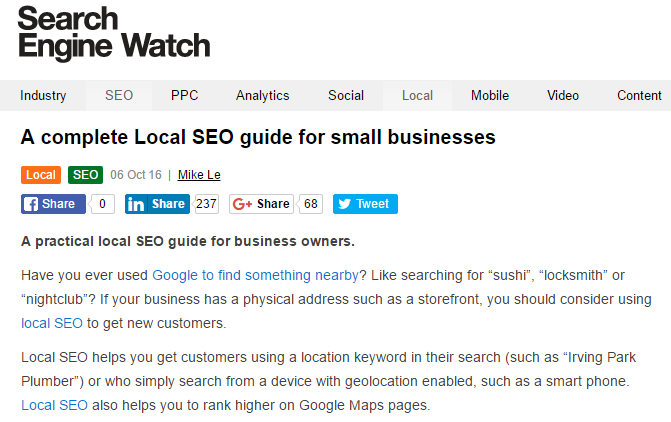
A practical local SEO guide for business owners.
Have you ever used Google to find something nearby? Like searching for “sushi”, “locksmith” or “nightclub”? If your business has a physical address such as a storefront, you should consider using local SEO to get new customers.
Local SEO helps you get customers using a location keyword in their search (such as “Irving Park Plumber”) or who simply search from a device with geolocation enabled, such as a smart phone. Local SEO also helps you to rank higher on Google Maps pages.
For example, The Art Studio NY, the top-rated painting school in New York, ranks #1 for local search term “painting classes nyc”:
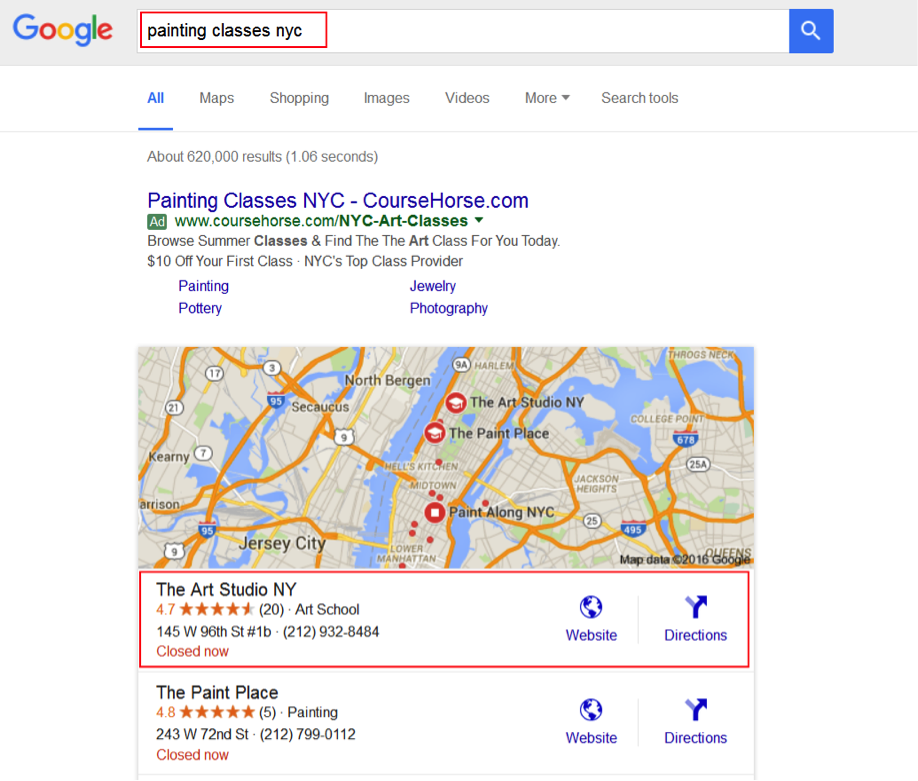
The local listing of The Art Studio NY includes NAP (name, address, phone number), Google Map, Google Reviews, hours of operation, website, and directions. This local listing format is very helpful in driving business.
According to Moz.com, the major local search ranking factors are:
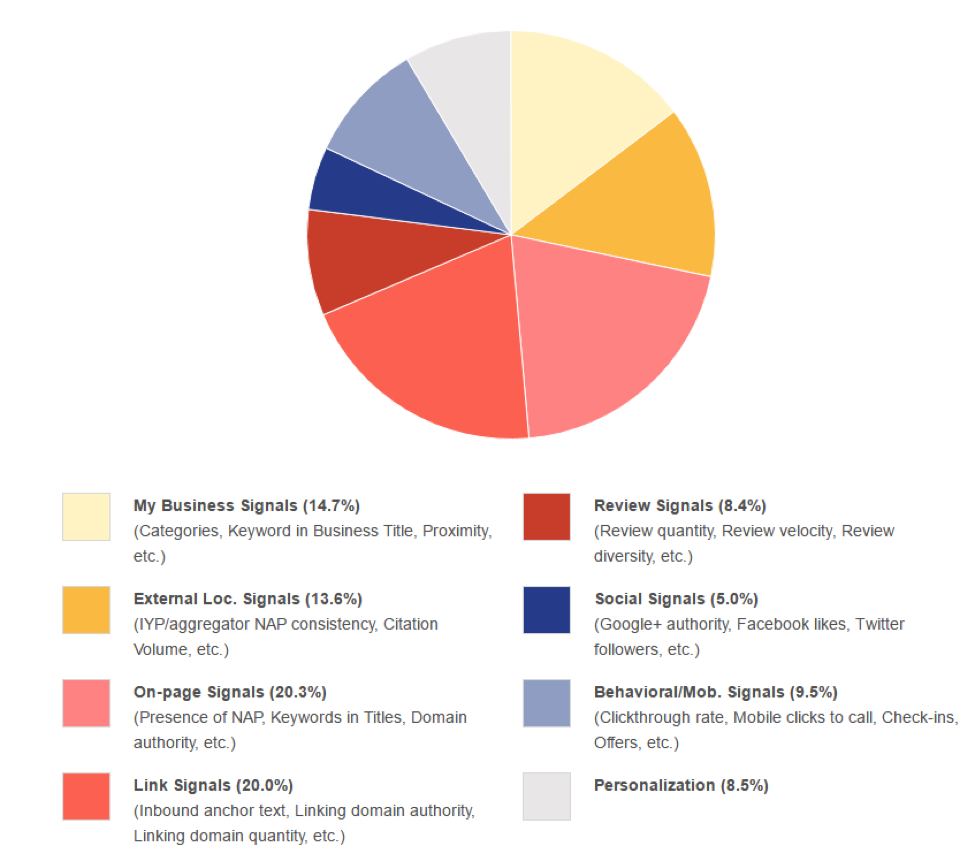
According to Moz, on-page signals such as NAP (name, address, phone), optimized meta tags and titles, and domain authority are the most important ranking factors (20.3%) for local SEO.
Here are a few best practices for local SEO:
Google My Business connects your business with customers. Go to Google My Business and claim your Google My Business page, If you haven’t already. Google will send a verification code to your address, and you simply enter that code into Google My Business.
The verification process may take 1-2 weeks.
Once you’ve verified your account, make sure that your NAP (name, address, phone) is correct, choose the right categories for your business, and provide a unique, engaging description. Upload some high-res images, add your hours of operation, and most importantly, ask your customers to write reviews for your business.
Google will display your local business information on the right column as below:
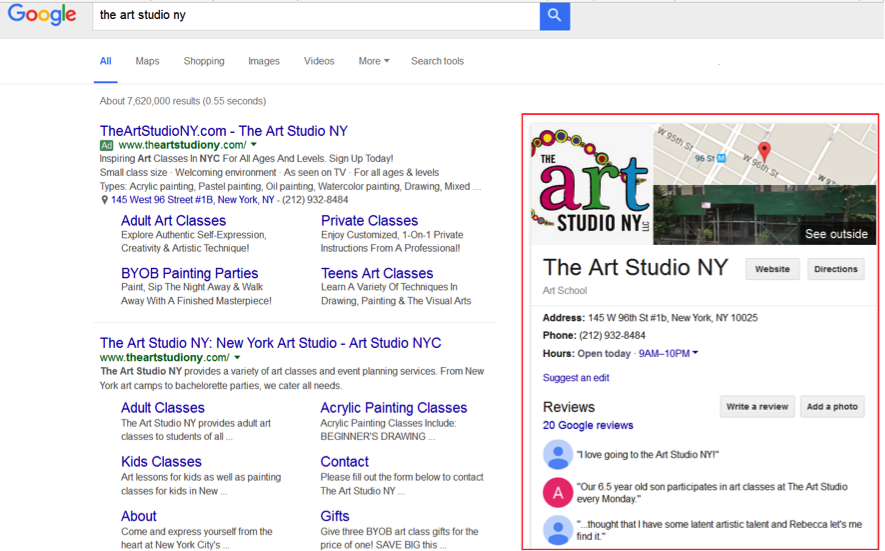
Make sure the business name, address, and phone number of each of your staffed locations (aka NAP – Name, Address, Phone) is consistent throughout the site (homepage, contact us page, footer, etc) and on other websites like Google My Business, Yelp and Facebook.
For example, beauty school The Beauty Institute – Allentown location, NAP is set consistent on multiple places (http://allentown.thebeautyinstituteskp.edu/)
Sitewide header (add address and Zip code to the header):

Homepage map:
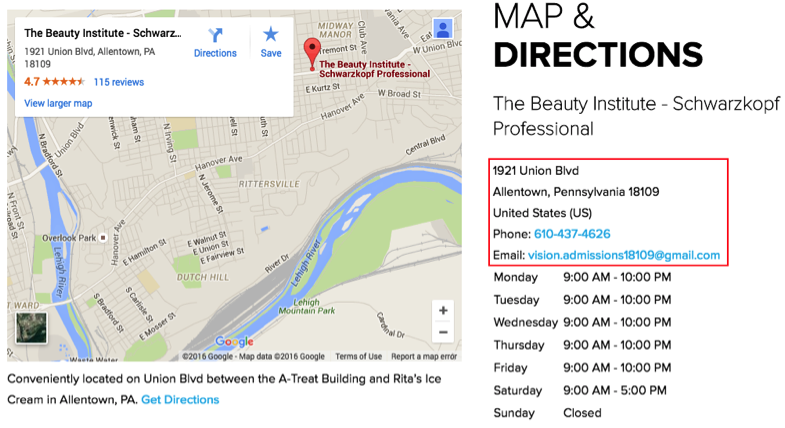
Sitewide footer:

Embed a Google Map on your website. You can use the map on Contact page or Footer section. But do not just embed a map that points to your address. You should points to your actual Google Plus local listing.
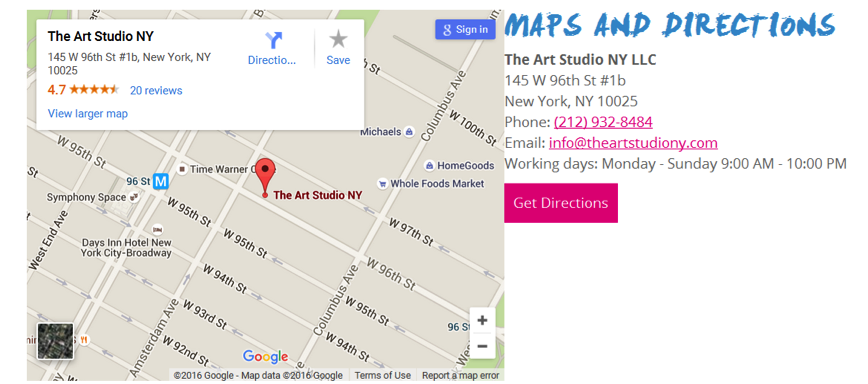
Include geo tags if your business is location specific. These tags can be generated via many online tools such as http://www.geo-tag.de/generator/en.html, and is placed on every page of the website. They let the search engines know where you’re based and improve your rankings for local search terms.
<meta name=”geo.position” content=”latitude; longitude”>
<meta name=”geo.placename” content=”Place Name”>
<meta name=”geo.region” content=”Country Subdivision Code”>
You can add schema markups for NAP (name, address, phone), geo coordinates (read more here), and specific business-related snippets, like event snippet, school snippets, and more.
These rich snippets help search engines understand your site content better, and show your local listings to more relevant local searches.
You can look up the schema format at https://schema.org/docs/schemas.html. The schema generator http://www.microdatagenerator.com/ is helpful to quickly generate schema.
To verify the schema and rich snippets are correctly applied, check with Google Testing Tool: https://search.google.com/structured-data/testing-tool.
For painting school The Art Studio NY, the relevant snippets include:
Local Business snippet: (school name, phone, location, hours of operation).

School Snippet: Show information about the school.
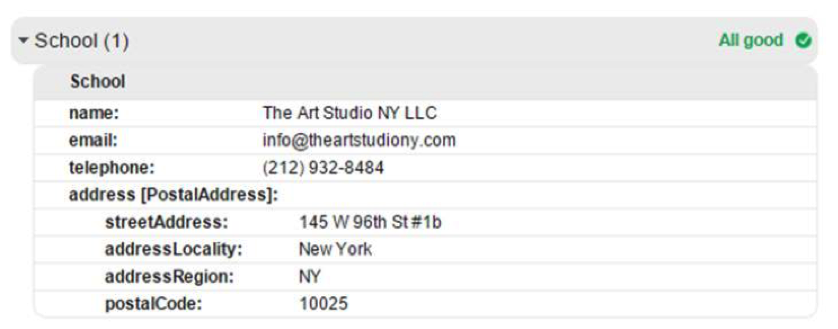
Event Snippets: Display class schedule. Each event/class will be displayed on SERP (search engine result page) as below:

Person snippet: This snippet is applied for instructor page, to display instructor information
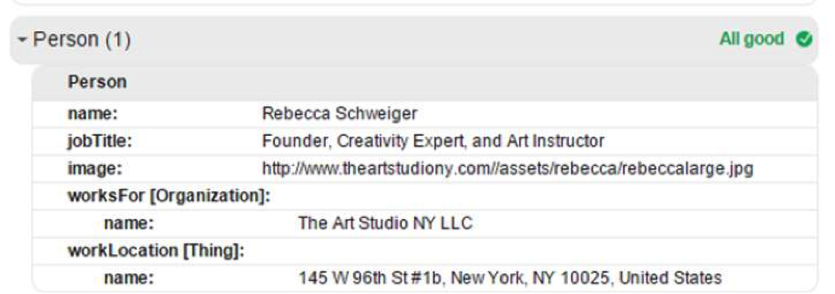
Meta title & description tag: Include your city and state in your title tag and your meta description tag. This can boost clickthrough rates for local search results.
<title>New York Art Studio – Art Studio NYC – The Art Studio NY</title>
<meta name=”description” content=”The Art Studio NY provides a variety of art classes and event planning services. From New York art camps to bachelorette parties, we cater all needs.” />
Heading tag: You should include your city in your heading H1 tag.
For example: http://allentown.thebeautyinstituteskp.edu/
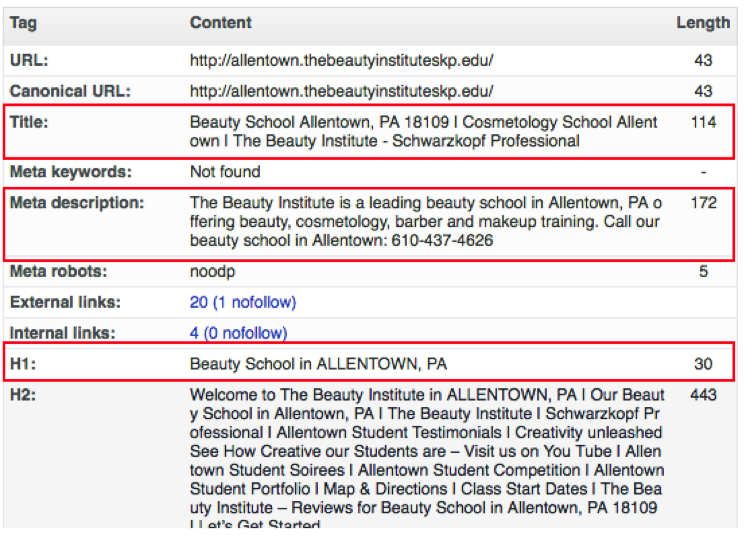
Page content: It’s also important, but often overlooked, to include your location within your page’s content. Make sure your website shows your location in as many places as it makes sense.
Logo: The logo of your site should be optimized with local keywords.
For example: With The Beauty Institute, the logo of the main site and logos of each campus site are optimized:
<img src=”http://thebeautyinstituteskp.edu/wp-content/themes/toniandguy/images/logo.png” alt=”Beauty School | Cosmetology School | The Beauty Institute – Schwarzkopf Professional”>

Image Alt tags: Your alt text (the text that describes your images) should also include your city.
<img class=”alignnone wp-image-2157″ src=”http://tghairacademy.edu/wp-content/uploads/2015/11/banner2.jpg” alt=”The Beauty Institute | Schwarzkopf Professional – Top beauty school in Pennsylvania” width=”100%” />
If your business has multiple locations, it’s almost always better to build separate location pages with strong content for each location. For example, The Beauty Institute uses multi-site WordPress to create separate subdomains for each of its schools in different locations: Ambler, Philly, Allentown, and Stroudsburg.
It is important to make content in each location unique, instead of using the same content template and only replace location data. Here are a few ideas to make local content unique:
A citation is an online reference to your business’s name, address and phone number (NAP). Local directories are a useful resource for building citations. These citations are valuable even if they aren’t linked, as long as they’re displaying your NAP consistently.
For multi-location or multi-practitioner businesses, point the link on all citations to the correct corresponding landing page on your website. For example, you should point all Philadelphia citations to your Philadelphia landing page on your site.
You can use tools such as Bright Local or Yext to find any existing citations you have, and then update them all at once to make them consistent. You can also use the tool to check out your competitors’ citations.
Bright Local citation tracker for The Art Studio NY:
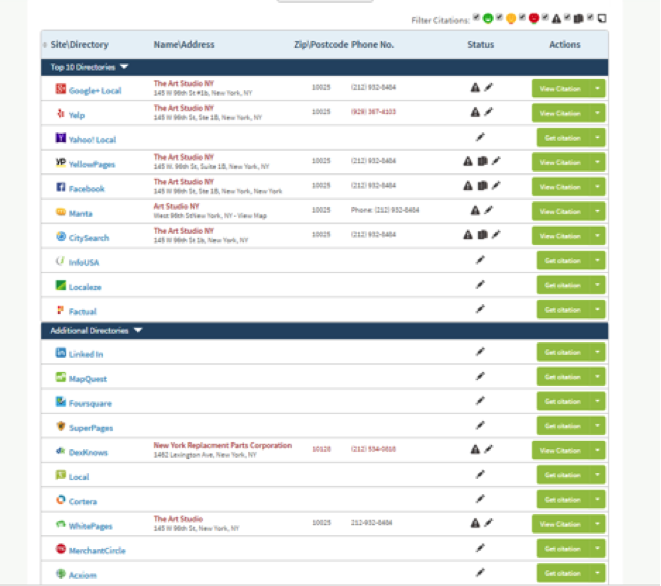
Also, remember to set up alerts through social listening tools like Mention or Google Alerts to track new mentions of your competitor’s NAP listings.
Customer reviews, especially from credible sources like Google My Business, Yelp, and Facebook, have the solid impact on Google local rankings. Just don’t try to get too many reviews at once, because Google might found your activities suspicious.
Facebook, Twitter, Google Plus, and Pinterest are the most popular social media sites you should appear to promote your local business. Always include your contact information where you can, and make sure the contact information are consistent with your website. (Twitter doesn’t allow addresses or phone numbers, though).
Active social channels could be a strong local ranking factors, and indicating you have a credible and healthy business.
People are searching for lawyers, schools, restaurants and local shops online, especially via mobile devices. If you run a local business, let’s follow the above tactics to optimize your website for local search, and earn your share of new business!
This article was first published on Searchenginewatch.com.